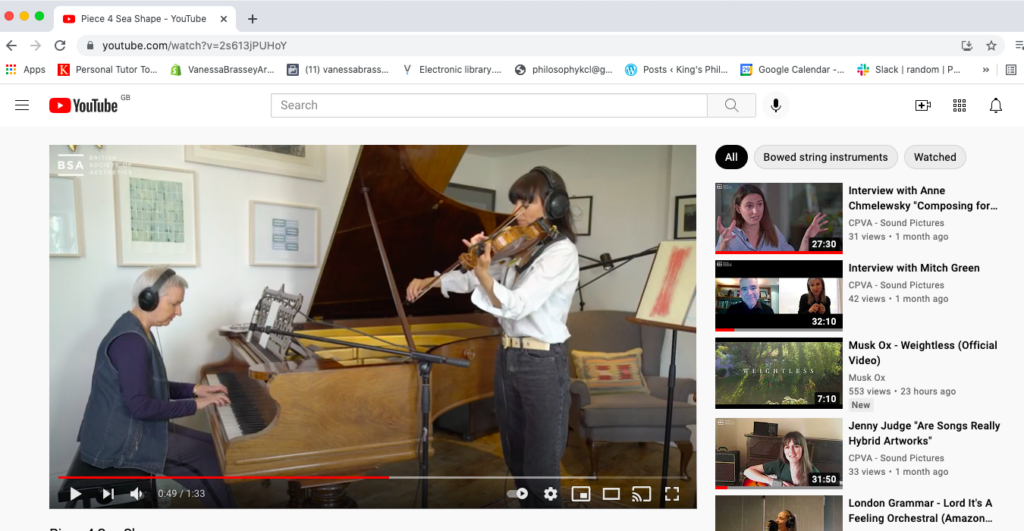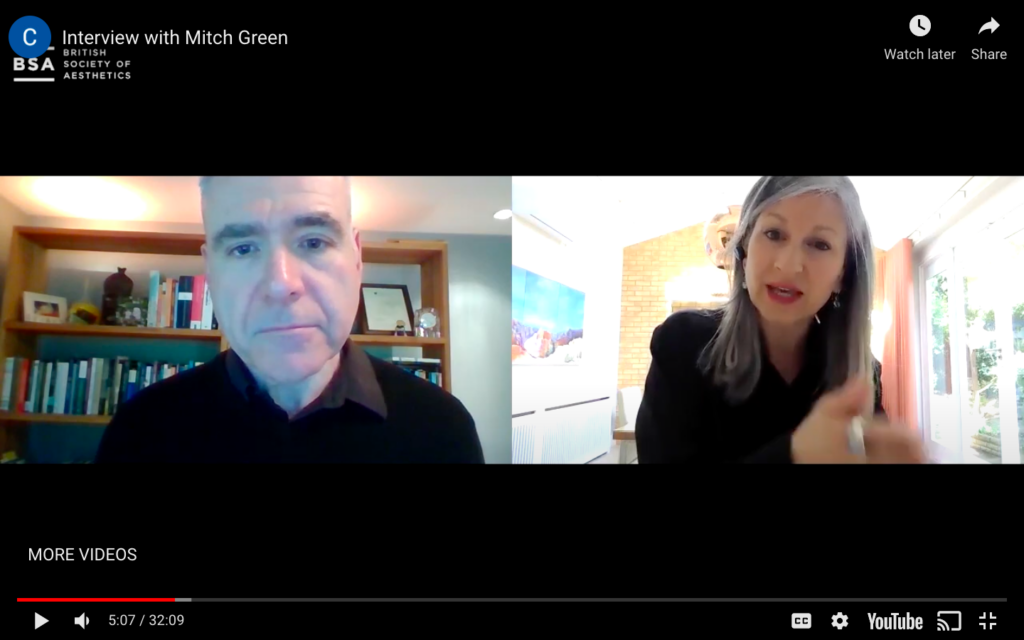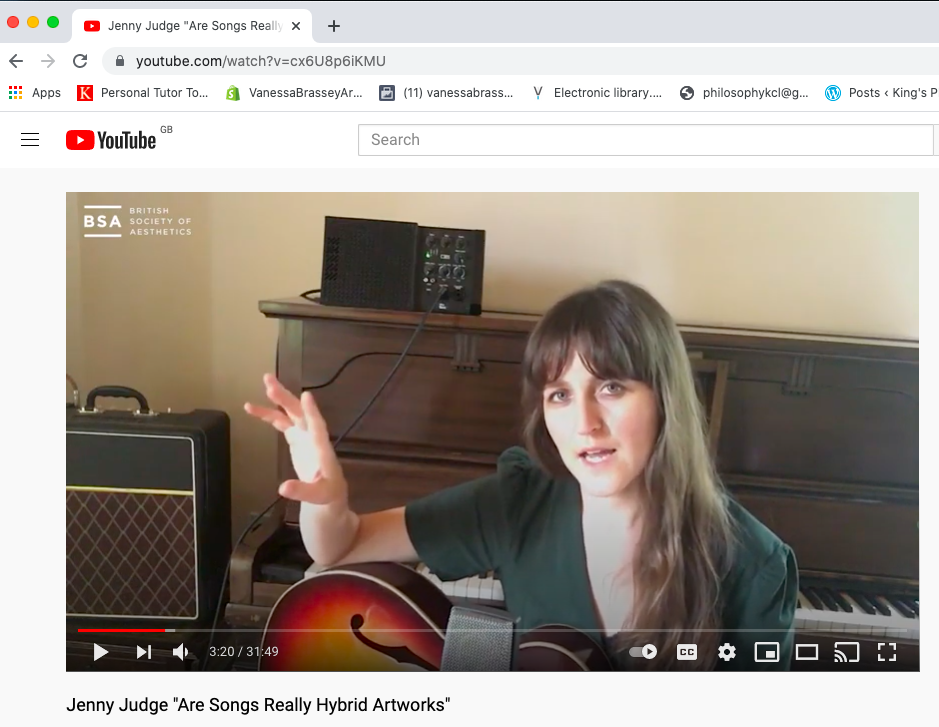Imagine a sculpture made to be heard, or a picture that can be played on a banjo. Although many artworks are multi-sensory in the sense that they invite appreciation by sight, sound, movement and even touch (e.g film and immersive theatre) it might seem odd to say a simple drawing is genuinely multisensory. We don’t expect a drawing to look like the taste of strawberries, just as we don’t expect warm vanilla to taste like triangles.
This expectation carries over to appreciation. It is natural to think that when your friend remarks on a painting, that they will say something about how it looks, rather than how it sounds. But, given that multi-sensory appreciation is held to be ‘the rule and not the exception in perception’ (Shimojo and Shams, 2001) do we ever appreciate a work with a single sensory mode? Does adequate appreciation of (apparently) single sensory artworks (for example, a painting) require input from the other senses?
To consider some replies to these questions we hosted the Sound Pictures conference (virtually) with generous support from the BSA small grant award scheme. Our CFP yielded papers from an interdisciplinary group of researchers who provides their contributions as watch/listen/read ahead films, podcasts and pdfs. These are now freely available to view at
https://philosophyandvisualarts.com/sound-pictures/
As well as academic talks, we encouraged philosophers to consider novel ways to present their material. Green provides a scene-setting interview to compliment his live keynote. Judge rose to the challenge by recording a musical presentation of her argument for songs as non-hybrid works of art. Matravers presented his reflection on Mixed Modalities with erudite aplomb to camera. Olive’s podcast offers an opportunity to listen ‘on the go’. Bowling was able to impart details of empirical research that one can scrutinise slowly. Responses to these by a range of scholars, as well as to Leddington’s paper by philosopher, composer and musician Dyrstad, have been posted up to stimulate further ideas.
We felt it was important to make the topic accessible to a range of interests. Accordingly, Brassey contextualised the specific research questions for the newcomer in a short topic introduction film. In addition, we were fortunate to interview Bafta nominate film score composer Anne Chmelewsky regarding her process when writing original scores for moving image. Given the nature of the question, we felt it was important to involve artists working at the intersection of ‘sound pictures’ and we were delighted by four original performances commissioned from artist Nicola Durvasula and multi-platinum selling violinist and composer Anna Phoebe https://www.annaphoebe.com/. He may no longer wish to admit it, but Matravers – that cool-headed analyser of expressive music – commented that as the last piece played us through to the conclusion of the conference, he felt quite tearful. Perhaps there was just something in his eye…
The conference attracted a broad audience, with over 100 pre-registrations, and a lively audience for the live keynote address and talks held on the 10th July 2021, 4-7pm BST. The introduction film and interviews are aimed primarily at those less familiar with what is distinctive about this question philosophically, or with a particular speakers’ work, or who are newly interested in the kind of questions we discussed.
We’d like to thank the BSA for supporting this novel format and look forward to continuing our investigations in this exciting area.



